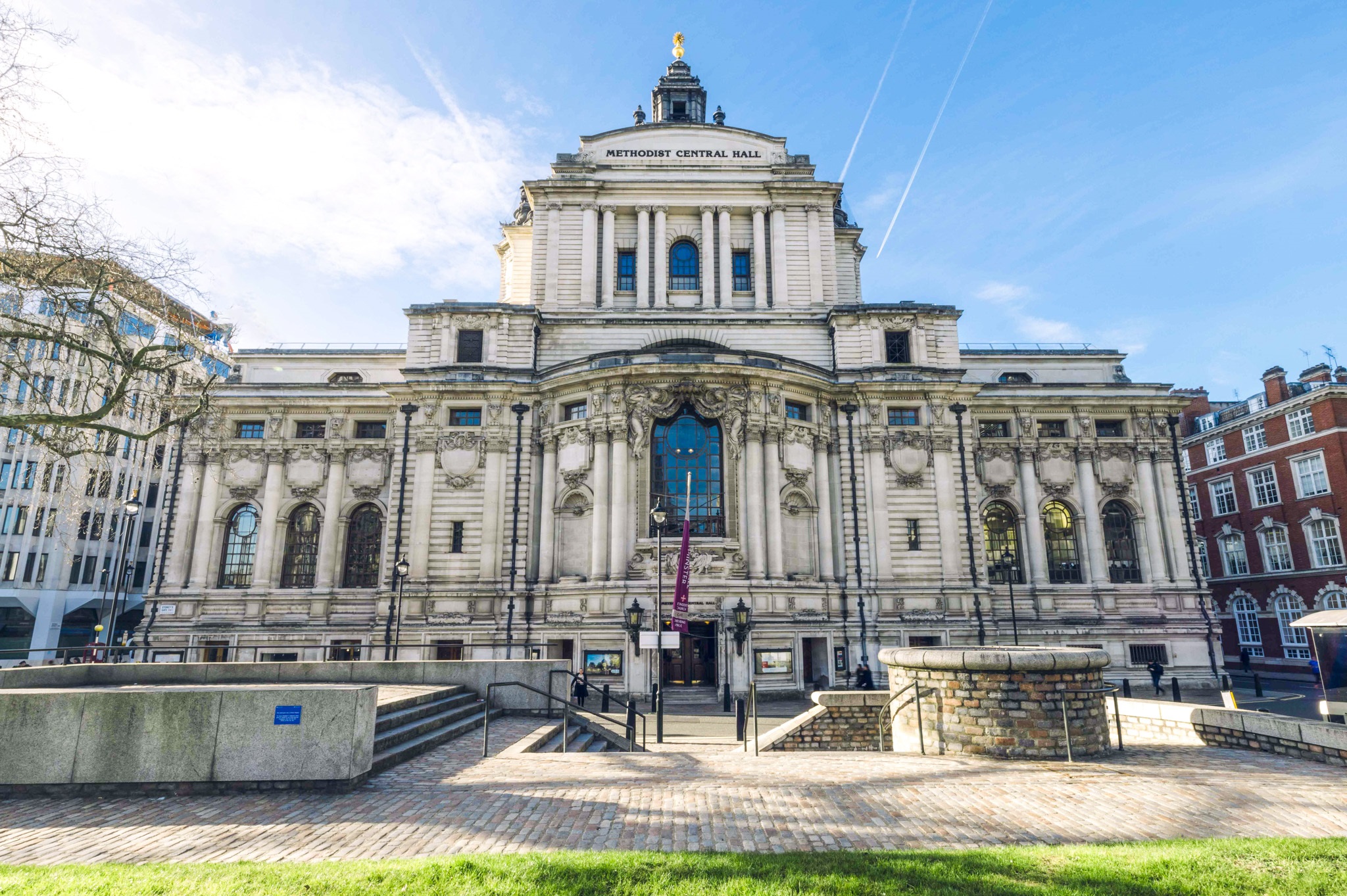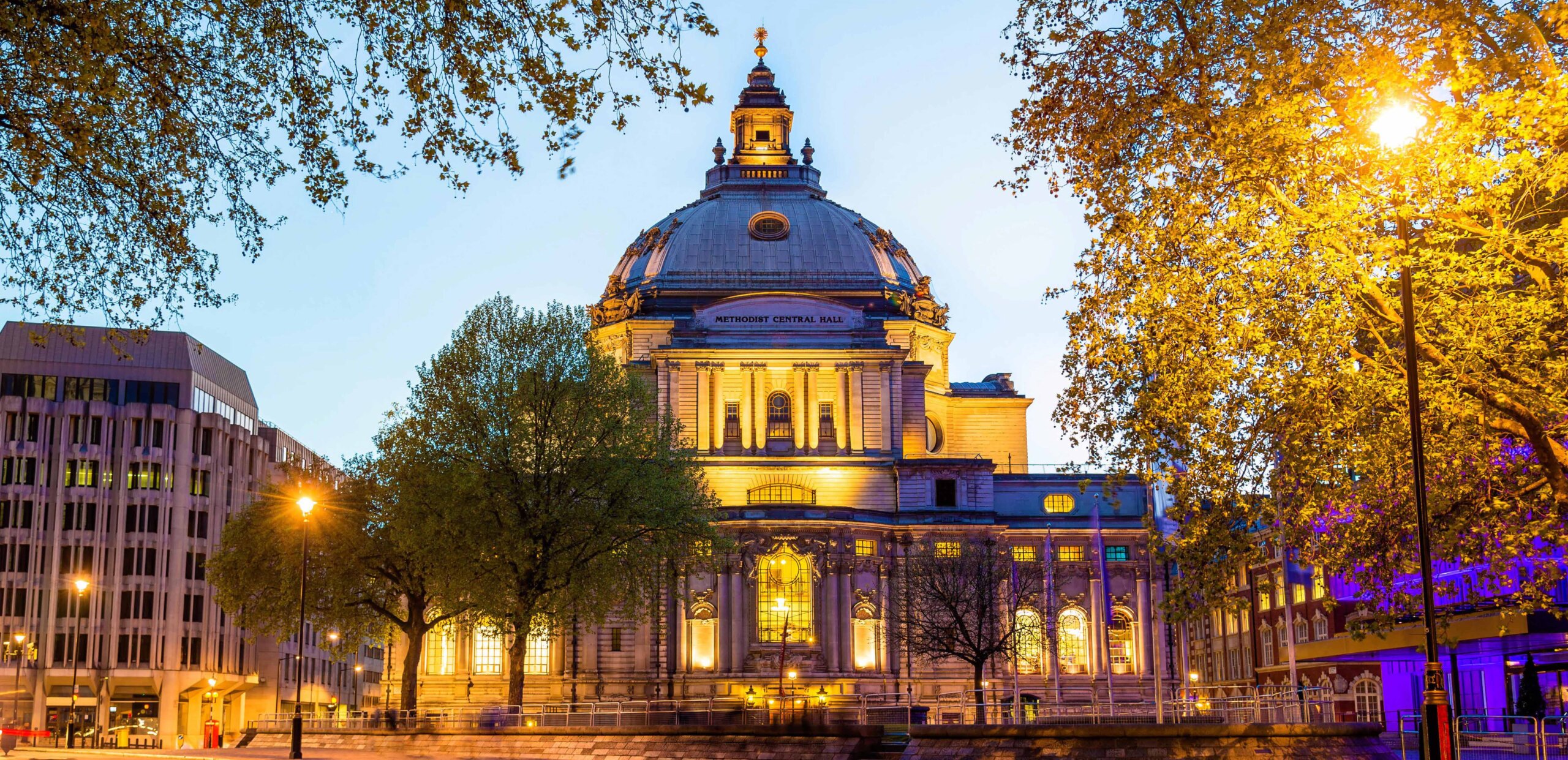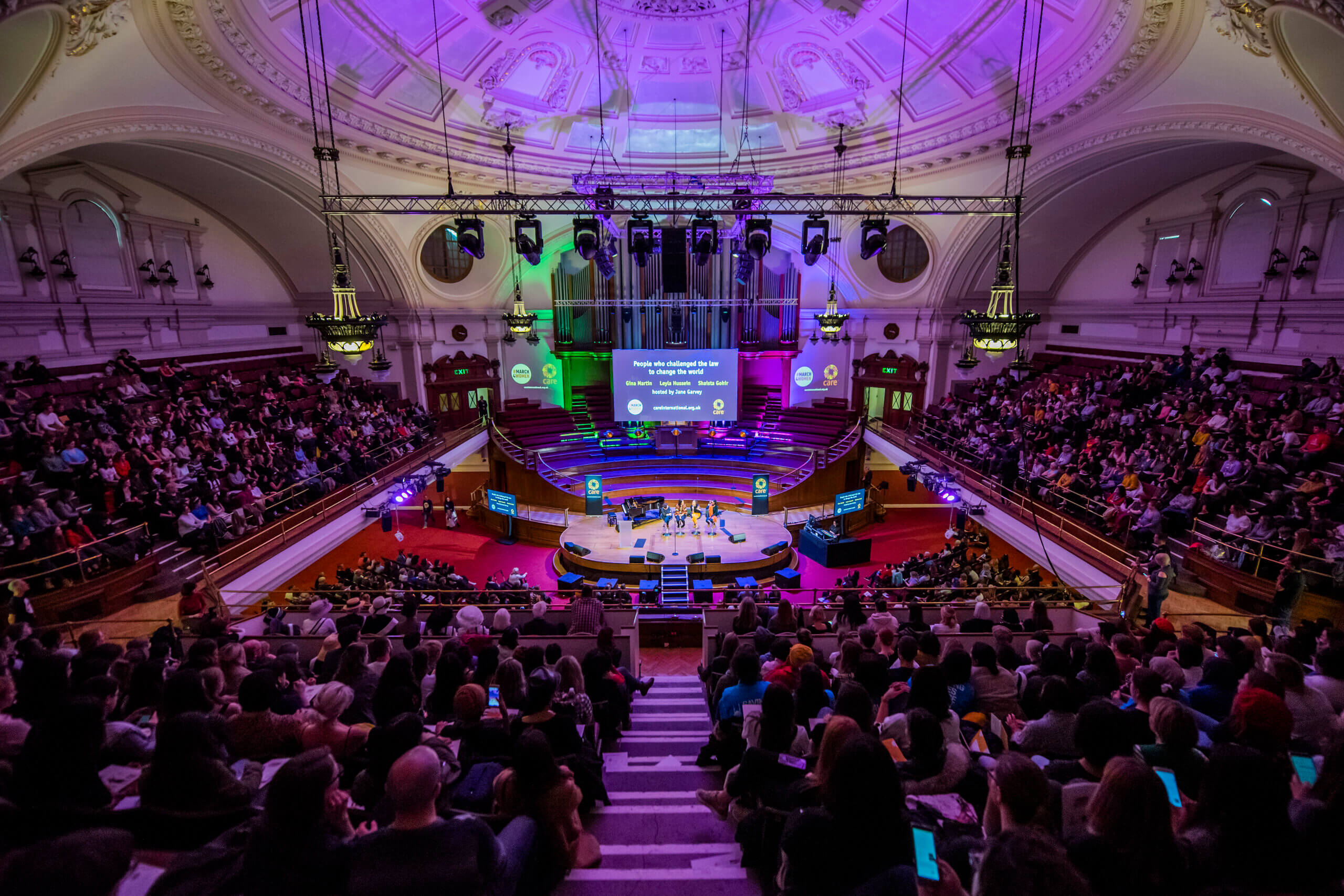Central Hall Westminster’s new £1m AV upgrade blends advanced audio technology with historical preservation. CN hears from White Light’s Jonjo Glynn and the venue’s general manager Edd Beamish about the extensive work that went into the project.
Following two years of planning, Central Hall Westminster, in collaboration with its in-house AV partner White Light, began a £1m project to install a state-of-the-art audio system in the Great Hall. The ambitious undertaking aimed to modernise the venue while preserving its historical integrity.
The Great Hall, renowned for its architectural grandeur and the largest domed ceiling in Europe, posed significant challenges for the installation of a permanent audio system. Previously, the hall relied on a touring system that required temporary setups, which often risked damaging the historic structure. White Light aimed to overcome these obstacles and ensure seamless audio for the hall’s diverse range of events.
“Our relationship with Central Hall dates back to 2015, when we first invested in its AV infrastructure,” says Jonjo Glynn, head of production management at White Light. “Over the years, we realised that audio reinforcement in the Great Hall was a significant challenge due to its unique acoustics and architectural features.”
To tackle these challenges, White Light collaborated with acoustic consultancy Sandy Brown. The team conducted extensive surveys and acoustic modelling to design a system that would meet the hall’s specific needs without compromising its historical aesthetics. One of the primary obstacles was the domed ceiling, supported by pretensioned reinforcing rods, which made drilling for speaker installation risky.

“Our engineering lead, Chris Lane, discovered original blueprints and historical articles from the 1910s that helped us accurately map out the ceiling’s structure,” explains Glynn. “This allowed us to position the speakers without jeopardising the integrity of the dome.”
The installation process, completed over six weeks, involved removing 4km of redundant cabling, which was donated to charity for recycling. This decluttered the infrastructure and supported sustainability efforts. Preserving the building’s fabric was crucial, says Glynn.
“The new system reduces the need for additional AV equipment, lowering costs and minimising environmental impact from equipment transport and setup.”
The new audio system, using DMV Dotechnik technology, delivers improved sound quality across the Great Hall, addressing issues of intelligibility and acoustic clarity. Sandy Brown’s data-driven approach managed high-frequency reflections that previously caused listener fatigue.
“The Great Hall’s design was originally intended for unamplified speech and performance,” says Glynn. “However, modern usage requires amplified sound, and the hall’s acoustics presented every conceivable challenge – domed ceilings, overhanging balconies, hard surfaces, and an organ that scatters sound waves.”

The new system includes custom-engineered brackets for balcony speakers, minimising visual impact while providing comprehensive audio coverage. Additionally, all visible infrastructure was carefully integrated to blend with the hall’s historic aesthetic.
“We now have more speakers and better infrastructure with less visible equipment,” says Edd Beamish, general manager at Central Hall Westminster, who joined the venue in April 2023. “This project allows us to offer top-of-the-range acoustics while maintaining our heritage status.”
Feedback from initial events has been overwhelmingly positive, according to the venue team. The first major event, featuring entrepreneur Stephen Bartlett, showcased the system’s capabilities. “The sound quality was phenomenal,” says Beamish. “We conducted showcases with various music genres and couldn’t find a bad seat in the house.”
Regular clients, including those from the education and medical sectors, have praised the improved amplified voice range. The Royal Philharmonic recently utilised the system for a video shoot, highlighting the enhanced acoustics for musical performances.
“Our regular clients and the church, a significant stakeholder, have all noted the benefits,” adds Glynn. “The system allows us to offer a house rig to the growing market for audio performances, reducing costs and logistical challenges.”

Future-proofing was a key consideration in the project. The installation includes a full fibre backbone and a robust network infrastructure, ensuring adaptability for future technological advancements. “We overbuilt the infrastructure to allow for updates without major changes, considering both environmental impact and building preservation,” explains Gynn.
The sustainability aspect extends beyond infrastructure. The new system reduces the carbon footprint by eliminating the need for transport and setup of temporary systems. “This project has taken delivery vans off the streets and reduced wear and tear on the building,” says Beamish. “We’ve already seen a measurable reduction in our carbon footprint.”
The AV upgrade at Central Hall Westminster showcases a successful blend of modern technology and historical preservation.
“This project allows us to be a heritage venue with the prestige of a Grade II* listing and still offer top-of-the-range acoustics,” concludes Beamish. “It’s a fantastic achievement that benefits our clients, the building, and the environment.”





















